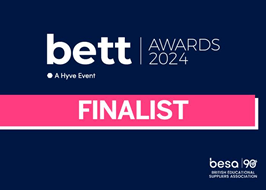Differentiation
Differentiation is the process by which differences between learners are accommodated so that all students have the best possible chance of learning. It is important that students are given tasks that they can achieve, but that will also challenge them, causing them to pause and apply computational thinking.
Learning programs
In each level there are three learning tasks that all students should attempt. The main body of the code has been written for the student with a video to explain how the program was written. Students are required to extend the functionality of the program and never start from a blank canvas.
Practice programs
In each level there are six differentiated practice programs in each level. The difficulty of the program is indicated by stars. One-star programs are the easiest and three-star programs are the hardest. Students do not need to solve every practice program. Instead aim to solve two or three as a minimum in each level.
For a quicker, 4-star scheme of learning:
Lower ability students: 1 star + 1 star + 2 star = 4 stars
Middle ability students: 2 star + 2 star = 4 stars
High ability students: 1 star + 3 star = 4 stars
For a longer, 6-star scheme of learning:
Lower ability students: 1 star + 1 star + 2 star + 2 star = 6 stars
Middle ability students: 1 star + 2 star + 3 star = 6 stars
High ability students: 3 star + 3 star = 6 stars
One-star programs
All students should be able to solve the one-star programs.
These programs mostly make use of the techniques in the first learning program and video. They include pre-written boilerplate comments, function definitions, main code function calls and output statements. This reduces the complexity of the functions-first approach so that students can focus on writing the code within a subprogram.
Two-star programs
Most students should be able to solve the two-star programs.
These programs mostly make use of the techniques in the second learning program and video. They include pre-written boilerplate comments, function definitions and output statements to give students a head start.
Three-star programs
Some students should be able to achieve the three-star programs.
These programs make use of all the techniques in the learning programs and videos. They include boilerplate comments to save time but offer no additional help with code.
Assessment points
The assessment point programs are suitable for all students. They should attempt as much of the program as they can by completing the bullet points in order. The programs are structured so that they get progressively more difficult as the program develops.
Student led learning
Students can choose for themselves which programs to attempt. This gives them control over the learning process which can be motivating. Teachers need to guard against students undertaking programs that are too easy for them, directing them to attempt higher star programs as necessary.
